Mediterranean diet: It’s why Italians are healthier than Americans and why I’m glad I left the United States
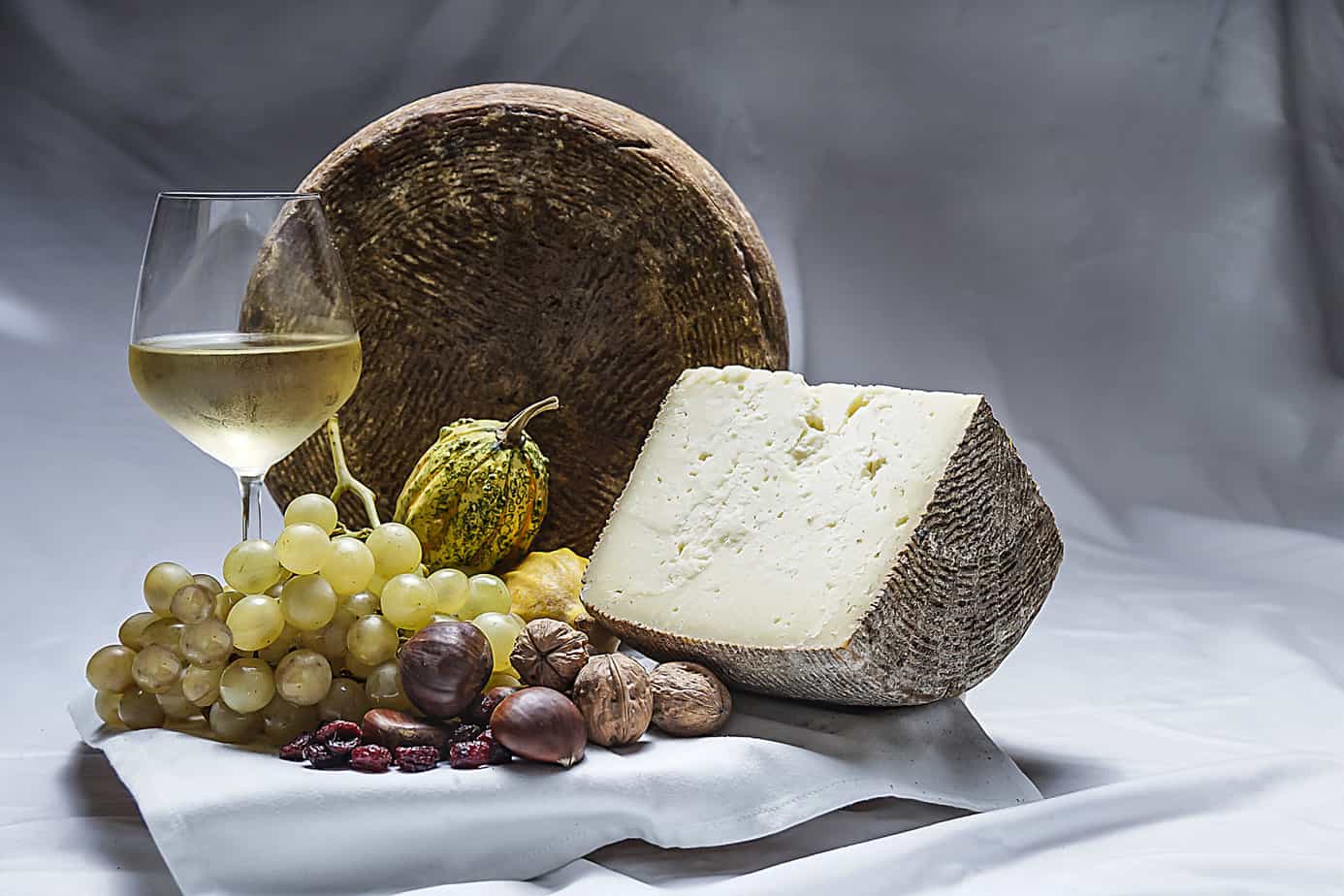
I had my annual checkup Wednesday. Besides the all-day exams costing only €452 as compared to nearly $3,000 for the same tests in the larcenous U.S., the other good news is I received a clean bill of health. I’m lucky. Deadly diseases often pick victims at random. Good genes are inherited, not earned. But there’s another reason I’m 67 and in no fear of “checking out” soon.
I live in Italy.
That line makes Americans smirk, like when I say my favorite sport now is soccer. The No. 1 question I get is how are Italians so fit in the land of pasta and pizza? The American view of the Italian diet is what Italian food is in the U.S. Sorry. Domino’s pizza lasted seven years here and gave up. A running joke among Italians who visit the U.S. is that Olive Garden’s breadsticks could grease their Fiat.
For the last nine years since retiring to Rome, I’ve adopted the Mediterranean diet. It wasn’t by choice. It’s how you eat in Italy, particularly in the South. It’s fruits, vegetables, white meat, fish, whole-grain pasta and, above all, olive oil. Yes, we eat pasta here. But it’s usually for lunch when it’s easily digestible. It’s with one or two ingredients. The pasta is homemade. The sauce is fresh tomatoes. The pecorino cheese is all natural.
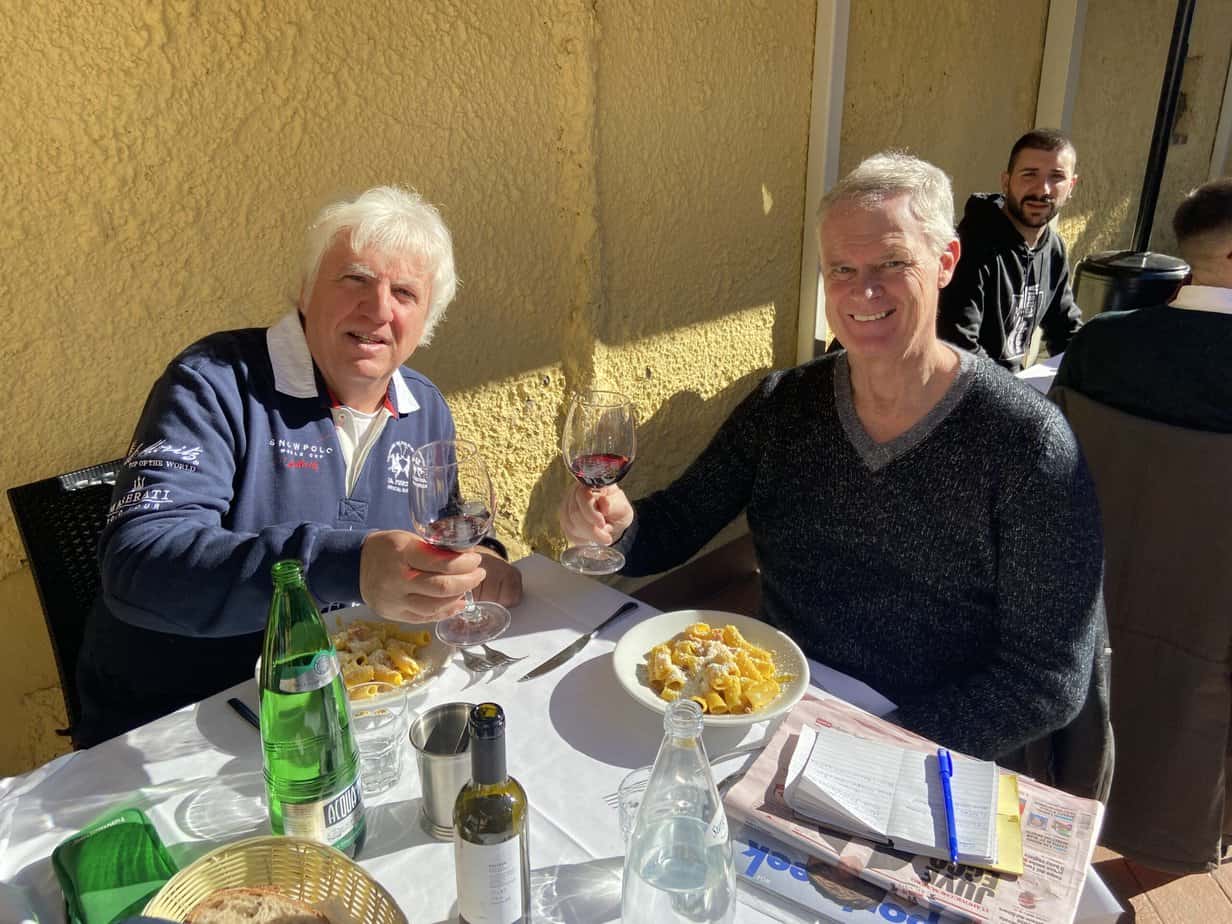
Yes, we eat pizza here. But it’s fresh ingredients and mostly vegetable toppings such as mushrooms, carciofi (artichokes), melanzane (artichokes), radicchio (radishes), tomatoes, bell peppers and onions among others. Meats make up a small slice of a pizza menu and never more than one. Crusts in Rome are thinner. There is hardly any grease. An empty pizza tray wouldn’t stain a doily. Pizza in Italy is almost health food.
Domino’s, the No. 1 pizza chain in the U.S. with a revenue last year of $4.53 billion, has more ingredients than a nuclear submarine. And it’s almost as heavy.
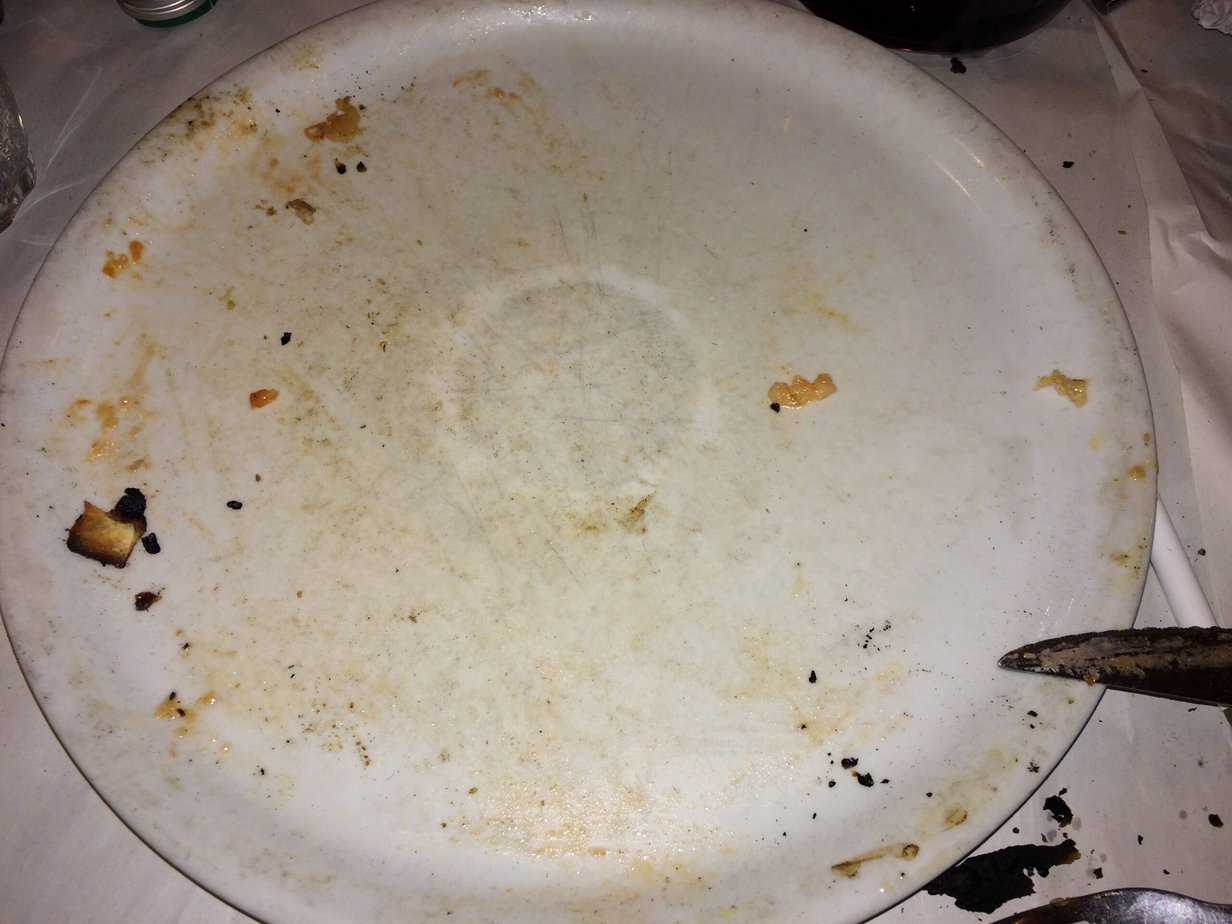
Mediterranean diet by the numbers
According to the Bloomberg Global Health Index, in 2019, the last year the survey was taken, Italy was the second healthiest country in the world with a score of 91.59 behind Spain after years as No. 1. https://worldpopulationreview.com/country-rankings/healthiest-countries The list:
- Spain 92.75
- Italy 91.59
- Iceland 91.44
- Japan 91.38
- Switzerland 90.13
- Sweden 90.24
- Australia 89.29
- Singapore 89.29
- Norway 89.09
- Israel 88.15
The U.S. was 35th at 75.0.
One reason is the U.S. obesity rate is bad and getting worse. According to the Harvard School of Public Health, 69 percent of Americans are overweight with 36 percent classified as obese (defined as a body mass index of over 30).
These are the 10 most obese countries by percentage of population:
- Nauru 61 percent
- Palau 55.3
- Marshall Islands 52.9
- Tuvalu 51.6
- Tonga 48.2
- Samoa 47.3
- Kimbati 46.0
- Micronesia 45.8
- Kuwait 37.9
- U.S. 36.2
Eight of the nine countries more obese than the U.S. are Pacific islands where the diet, due to the countries’ isolation, is primarily imported foods high in salt and fat for longer shelf life. What percent of Italians are obese?
Consequently, I will live longer in Italy than if I stayed in the U.S. You can look it up. Italy’s average life expectancy is 84.2 years, sixth highest in the world, according to the World Population Review. In the U.S. it’s 79.74 and 47th. Interestingly, the CDC reports the U.S.’ average dropped this year to 76.4, which would place it 80th, just behind Malaysia and Sri Lanka. It’s the lowest in two decades.
The World Population review list (does not include Monaco, Liechtenstein and Vatican City which would all be listed.):
- Hong Kong 85.83
- Macao 85.51
- Japan 84.95
- Switzerland 84.38
- Singapore 84.27
- Italy 84.20
- South Korea 84.14
- Spain 84.05
- Malta 83.85
- Australia 83.73
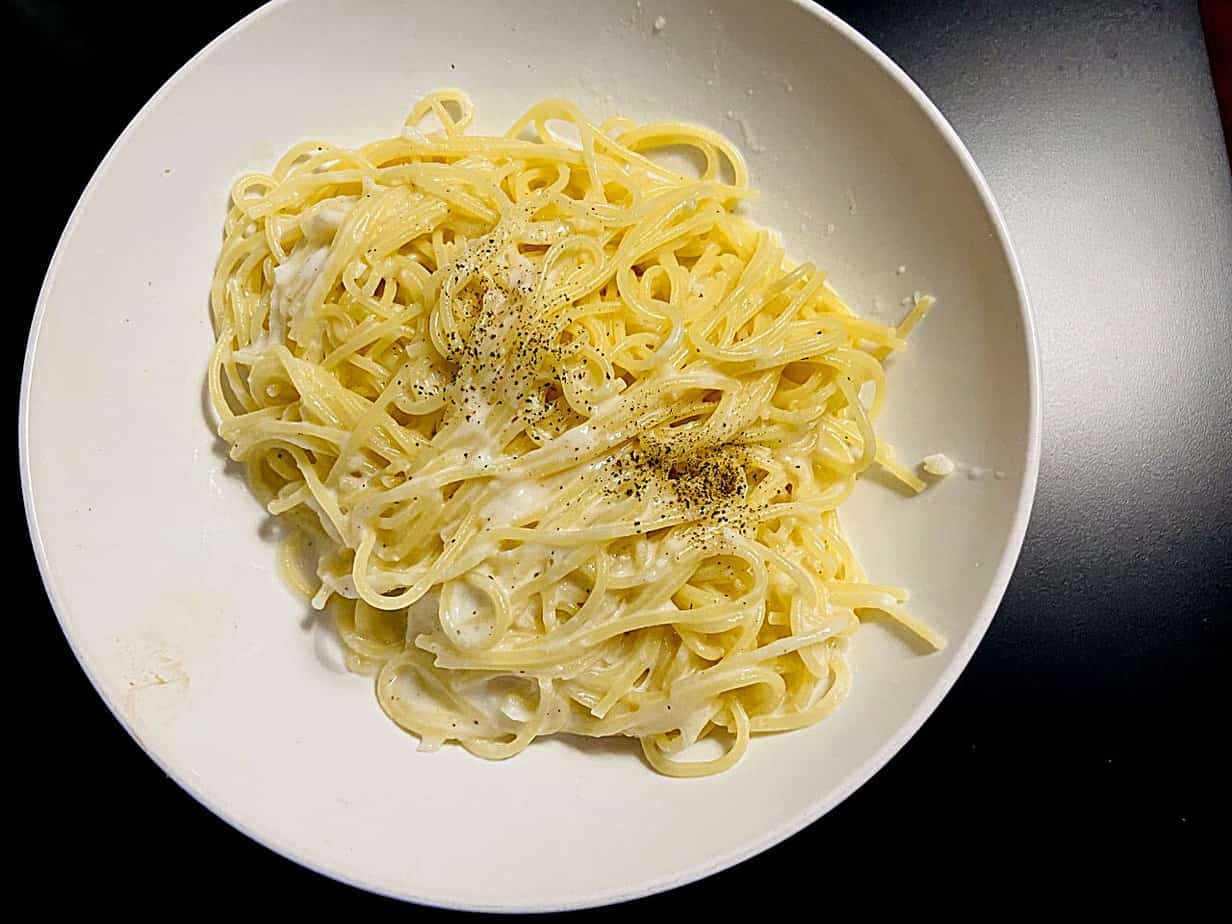
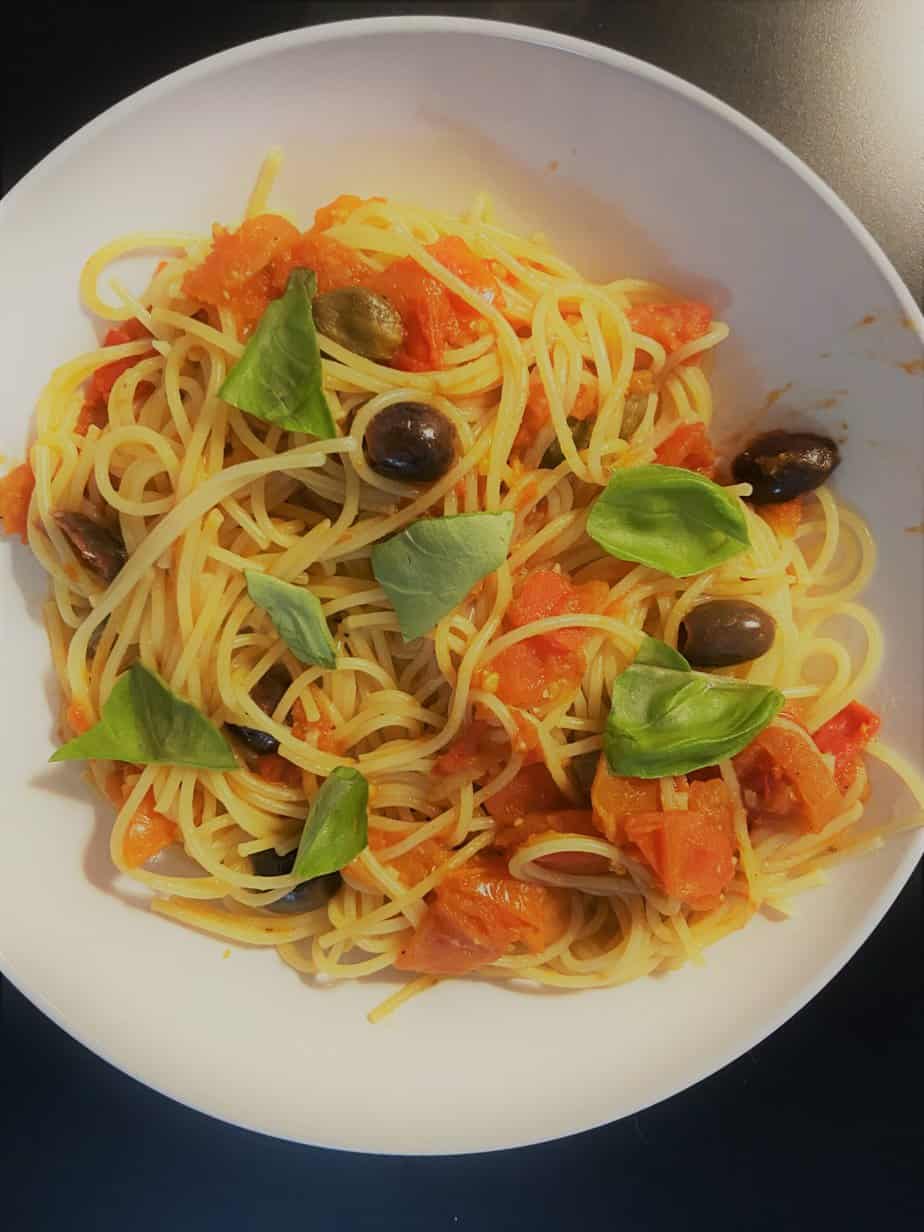
Problem in U.S.
I don’t need stat charts to tell the difference in countries. When I lived in the U.S., I traveled all over the country as a sportswriter. In many places you needed to spread mayonnaise on the inside of doorways to squeeze people inside a room. When I see an obese person in Rome, I sidle up to them. The vast majority of times I hear American English.
Yet all over the U.S., in the early morning and 5-7 p.m. time slots, fitness centers are packed. Jogging paths are crowded. Health food stores have long lines. But for every American weighing their food and logging their mile splits, two others do nothing. They have Domino’s on speed dial. They drive to the bathroom.
I had an obese roommate my senior year in college. We lived in an apartment complex spread over three levels. If he wanted to see a friend on the next level, he’d drive up the hill. The hill was about 30 feet.
Italians walk nearly everywhere. Many, such as myself, don’t have cars. Just walking to and from public transportation and getting around one of the world’s most walkable cities, I walk nearly three miles a day without “going out for a walk.” An Italian tradition is the passeggiata, a stroll they take before or after a meal.
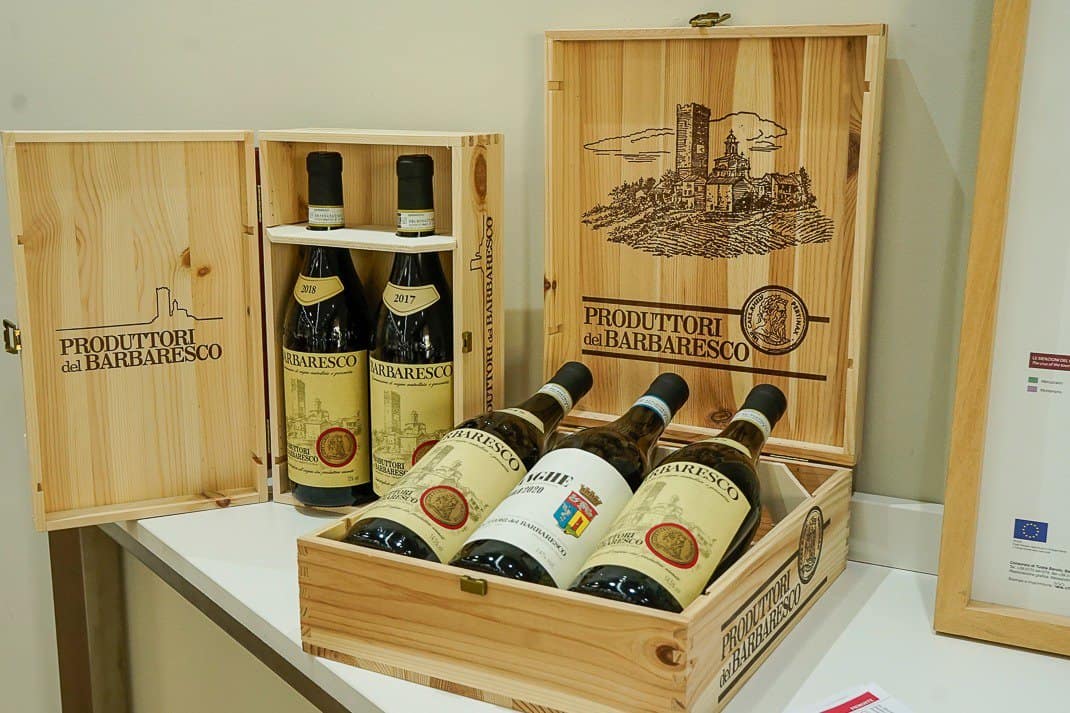
Wine vs. beer
Another huge difference between Italians and Americans is alcohol. Italy has a wine culture, not much of a beer culture. Italians annually drink 35 liters of beer per capita. Americans drink 104. (Burp!) In nine years in Rome I have yet to see a drunk Italian. In the U.S. I had friends who drank a beer to help them decide if they wanted a beer or not.
People have accused me of being a sizeist. Maybe I am. Excuse me if it’s bothersome to read that the U.S. spends an average between $147 billion-$210 billion every year on obesity-related issues such as diabetes and cardiovascular diseases.
The nutritionist
When I re-upped my gym membership at Anytime Fitness in May, I met with its nutritionist. Cinzia Di Tommaso has worked as a chef, pastry chef and as a diet consultant before becoming a nutritionist. (“Before she was one to get people fat. Now she’s one to get people thin,” said her fiance, Enrico Beltrotti, the gym manager and martial arts instructor.) She gave me an extensive diet plan with emphasis on fish three times a week (agreed), a cutback on my red meat (my favorite pizza is gorgonzola and sausage) and no more than two alcoholic drinks per week. (I promised no more than two before breakfast.)

I asked her about the Mediterranean diet which started in the early 1960s in Southern Italy, Southern Spain and Crete. It was based on scientific studies of the benefits of unprocessed foods.
“The Mediterranean diet is based on 60 percent vegetables,” Cinzia told me. “And good fat, like olive oil, olives, seeds. Actually, we use a lot of fresh food because it’s cheaper in respect to meat and fish.”
Italians have a phrase called chilometro zero. That means fresh foods grown and produced close to the place of purchase. Public markets are scattered all over Italy selling produce from surrounding farms. My Mercato San Giovanni di Dio, which began in 1960, is four tram stops up the hill from me. It’s a gritty, open-air, rough-and-tumble market that fills nearly an entire parking lot. It’s where I buy my fruits and vegetables, fish caught that day and bread made that morning.
When I lived in Denver, we had a farmers market but it came only on Sunday and charged about $2.50 for a tomato. We called Whole Foods, the local health food grocery store, Whole Paycheck.
Most Americans also cook in butter and Italians cook in olive oil. One tablespoon of butter contains 7.3 grams of saturated fat compared to 1.8 in extra virgin olive oil.
My mom was worse. She cooked with Crisco, a vile American cooking staple that was basically a big tub of white lard, so heavy in chemicals it was originally used to make candles. Mom would spread it on every cooking pan so food wouldn’t stick while leading us all down a path of clogged arteries.
In Rome, I only use butter the three or four times a year I make American pancakes. I use olive oil on such regular dishes as salads, pasta, grilled vegetables and bruschetta.
“It’s a natural antioxidant,” Cinzia said. “The chemical composition is really better. Olive oil is a liquid instead of the lard or butter which is solid. This kind of fat becomes solid in our bodies. This is the problem.”
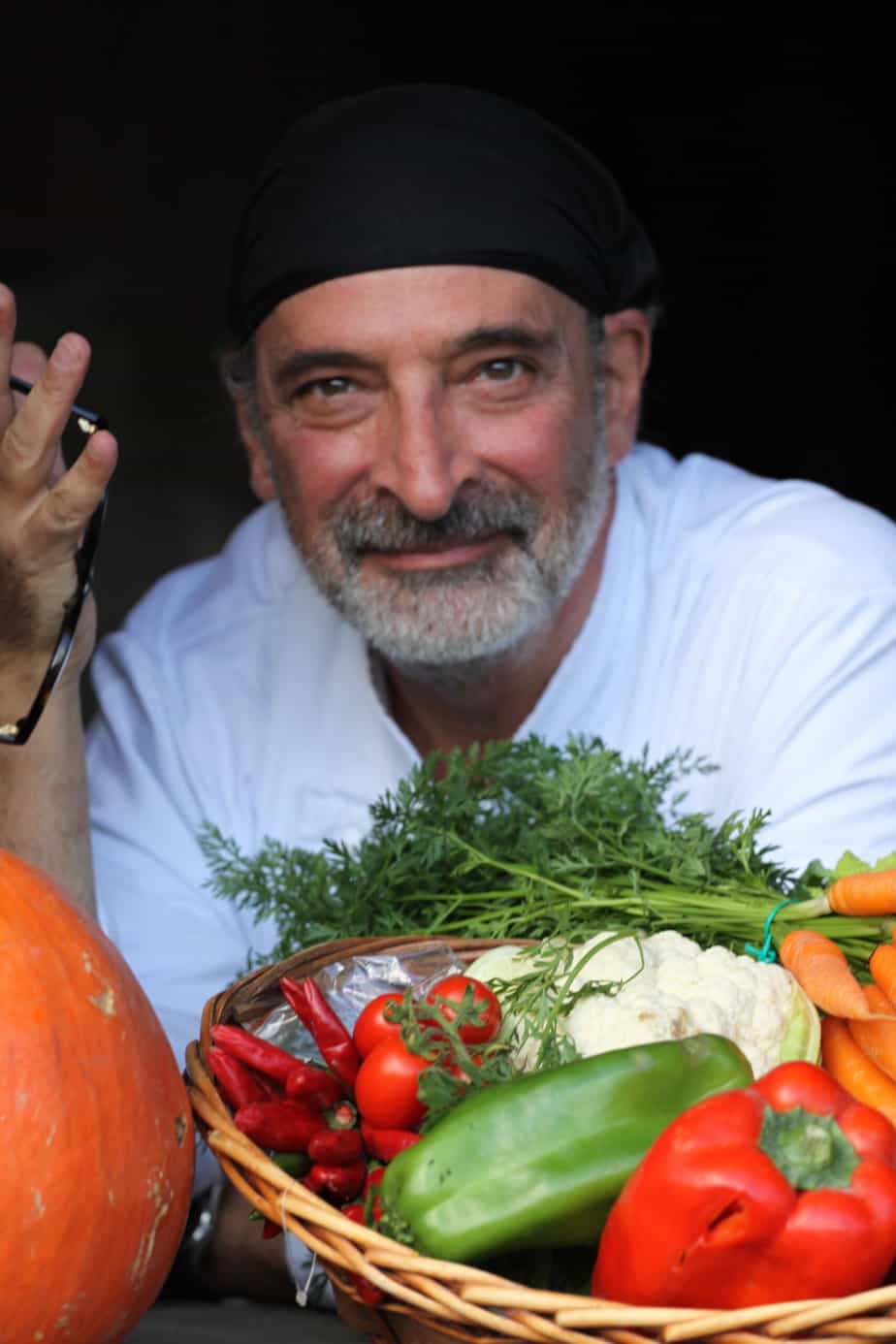
The chef/restaurateur
Andy Luotto is an American-Italian from Brooklyn who has owned and worked in restaurants in Italy for years. He became famous in Italy with a popular TV cooking show. He wrote four books about Italian cooking. He’s the driving force behind Riva Portese, a new restaurant that will open down the hill from me in September.
No one in Rome is better to address the difference between American and Italian diets. He agrees with me. A major problem is American portions. Pasta dishes in the U.S. look like replicas of Mt. Vesuvius.
“You don’t have to eat that much,” he told me. “Portions in America are ridiculous. They’re huge. The sandwiches … There’s a pastrami palace in America, in New York, called Katz’s. The thing is written on the menu that if you can finish a whole sandwich, they’ll give you another one for free. They print that out. This is how you can eat and get sick.”
Andy emphasizes eating produce in season. In my kitchen I have a produce wheel that lists what fruits and vegetables are freshest that month.
“Basically all Italians follow the season,” he said. “The ‘Big Light’ tells you when things are ready to eat. The Mediterranean diet is very, very simple. When you get right down to it, just heat stuff up. Pick it when it’s in season. Add a drop of olive oil and a little garlic. The best dish in the world is spaghetti with tomatoes.
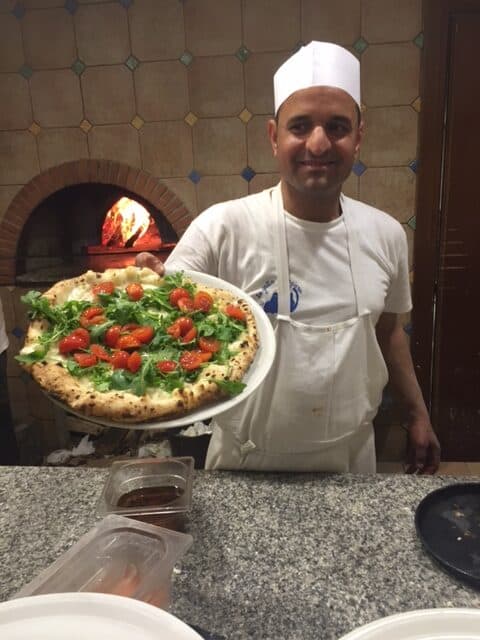
“It’s a matter of common sense. Common sense is natural in Italy. In the U.S., you can buy anything any time of year. That’s not good. There’s got to be a reason for the seasons. Also for a cook, it’s kind of fun to say, ‘Sorry, (at this time) we don’t have any broccolini rapa.’”
I understand the sensitivity people have over their bodies. I’ve never body shamed anyone to their face. I know how people feel. I was body shamed as a skinny kid trying to play sports. But I did something about it. I changed my diet. I joined gyms. I moved to Italy. I’m a fairly proportioned 6-foot-2 and 205 pounds. (For 40 years I was 6-3 but Wednesday’s checkup revealed I shrunk an inch. I was reminded I’m 67. “E’ normale,” my doctor told me.)
But I will body shame countries. Americans are embarrassing themselves on the world stage. Not all their fitness video selfies on Instagram can save them. Italy has the best food in the world and it’s not just because its flavors make me swoon like Meg Ryan in Harry Met Sally. It’s because it’s less fried, in smaller proportions and healthier through and through.
It’s something I’m just going to have to live with.


August 1, 2023 @ 11:40 am
Excellent article John! I couldn’t agree more and much of this I was telling visiting family just this past weekend. I will send them this article as it is more complete than what I was saying. I am a fellow American, fellow former Oregonian, fellow Dem. Keep up the good writing and eating!
August 1, 2023 @ 1:52 pm
Thanks, Jim. The numbers are scary, aren’t they? Do you live out here? Where? If you come to Rome, look me up. Let’s drink some healthy wine.
August 1, 2023 @ 2:57 pm
Excellent information. You are 100% correct. I am so happy for you and your healthy lifestyle I am currently eating the Mediterranean way. It’s hard in the US. Too much processed food Take care. Love your articles
August 1, 2023 @ 7:12 pm
Thanks, Stacie. It’s true. You can eat anything you want anytime you want in the U.S. It’s just going to cost you. And it’s a hassle. In 23 years in Denver, I never could find homemade pasta. Whole Paycheck, er, Whole Foods was outrageously expensive. Food in Italy is priced for Italians who can’t pay those kinds of prices. Fortunately, for them, natural food is the norm.
August 1, 2023 @ 3:10 pm
Excellent article John. I’d like to add one more point concerning diet. Having spent time visiting relatives outside of Naples, not once was I offered or saw anyone eating bags of potato chips, pretzels, Tostitos, etc. Snacking in between meals with those items can’t be helping American waistlines. I was surprised Coke is very popular, never Diet Coke and always served without ice.
August 1, 2023 @ 7:10 pm
You’re right, James. I didn’t think about the snack factor. I was going to write about the difference in fast food sales but it was long enough and depressing enough for Americans. Also, fast food is growing in popularity with Italian youth.
August 1, 2023 @ 3:38 pm
Excellent. True. Americans would destroy restaurants that do not serve Mt Vesuvius size portions. Have you see the larger size wheel chairs in hospitals? Larger chairs in hairdressers etc…. You should see cruise ships!! Makes you sick to see.
Two glasses of wine a week? Ha. Then I saw you promised before breakfast. That made sense.
Thanks for laughs and facts. It’s sad. Embarrassing.
August 1, 2023 @ 7:08 pm
Extra large wheelchairs? My God! The sign of the apocalypse. I heard human rights groups are supporting obese airline passengers for demanding two seats for the price of one. At least try, people.
August 1, 2023 @ 4:58 pm
John: Great tale. Love to read about the Italian lifestyle.
Hope all is well.
Lee Barfknecht
August 1, 2023 @ 7:09 pm
Thanks, Lee. Come over for a visit. Rome’s been around for 3,000 years. It’s not going anywhere.
August 1, 2023 @ 5:36 pm
Another good article! And, I would like to add that most pasta easily available in Italy is 10-14 % protein. Low protein pasta is also sold in Italy, at some chain grocers. According to one grower I know, at least his pasta can be eaten by people who are gluten intolerant. I believe it is made from older and different varieties of wheat. Almost all pasta sold in USA (even familiar Italian brands) is 7-9 % protein. Italy exports mostly inferior pasta, and keeps the best at home. Read the labels. And if you do ever find, in a specialty shop, Italian pasta in the USA that is high in protein, it will cost you $10 or more for one package.
Also, the reason Pacific Islanders can’t grow and eat their own food, and have to import inferior, fattening, prepared foods, is because so much of their land has been contaminated by nuclear bomb testing, and it is not safe for agriculture, or naturally growing edibles.
I lived in Italy for almost a decade, and would love to come back!
August 1, 2023 @ 7:07 pm
Interesting facts. I didn’t know Italy exported inferior pasta. All dry pasta tastes the same to me. I try to buy homemade stuff, fresh, at my local alimentari. That is special.
August 1, 2023 @ 9:08 pm
I’m just thinking about some gelato on this muggy STL day!! Ha! Great stuff John and definitely making me hungry. I haven’t eaten pasta in forever. The other hell you don’t mention is the high sodium content. We have some amazing Italian restaurants here but I’d rather cook at home where I can control what I put in. Just need to move my ass to Europe! Thank you good sir!!
August 2, 2023 @ 6:55 pm
Thanks, Mike. When I lived in the U.S., I steered away from Italian restaurants, not to mention Italian cooking. I talked to some Italian owners and even the pizzeria owners said they found they had to “americanize” their pizzas. Otherwise they wouldn’t sell it. They want the huge portions, the olive oil dripping off the bread, 15 ingredients on a pizza. But the ingredients are so bland in the U.S., maybe they need more to make it palatable.
August 2, 2023 @ 12:09 am
Nice piece. When in Rome, I stay near Pz. San Cosimato with its six-mornings-a-week open market. Fresh, fresh, fresh every day, is a secret gourmet “ingredient” many fellow Yankees can’t sample in the States. Can hardly wait to get back to Rome in February and Ben again cooking a l’Italia.
August 2, 2023 @ 6:53 pm
Thanks, Dick. That’s a great piazza. Ever go to the Siciliano, the Sicilian bakery on it? Great pastries.
August 2, 2023 @ 12:20 am
l’m a Brit living in the US – been here 43 years. I’ve seen my peeps getting bigger and bigger. The country is slowly, but surely, eating itself to death – and they won’t acknowledge it.
Kudos on moving to Rome. l’m going back in October for an amble up the “shin” of the country. Love your blogs – keep them coming!!
August 2, 2023 @ 6:50 pm
Thanks, Linda. When I returned to Denver from my sabbatical in Rome from 2001-03, all my old friends with no benefits had gotten huge. No discipline. No exercise. Late nights. Hard drinking. Then breakfast at 1 a.m. Let me know if you have any questions about Rome or Italy before you get here or while you’re here.
August 2, 2023 @ 6:38 am
Great article John! I have said this many times to my friends. Last year I spent about a month in Rome and traveled southern Italy, Puglia is amazing. Just prior to my adventure I had my annual check up to include bloodwork. So after 4+ weeks of eating fresh food, I retuned to the states. I immediately contacted my doc and requested new bloodwork. I felt great, walked everywhere and ate healthy. Ate pasta and/or pizza everyday! My bloodwork dropped, only a few points but it still dropped. I can only imagine living there full time. I only spent 10 days in Rome this year, hoping for more next year! Keep up the great articles!
August 2, 2023 @ 6:46 pm
Thanks, Stephen. Congratulations. Go to Sardinia where sociologists have said they have the healthiest and longest-living people in the world. It’s because EVERYTHING there is natural.
August 2, 2023 @ 1:53 pm
Hi John. We actually met about….5-6 years ago at a Dems abroad event. I do live in Rome and am a scientist in Monterotondo. Perhaps we should grab a drink sometime. I am partial to beer as I brew beer and am a beer judge. However, I do appreciate a good wine. Cheers!
August 2, 2023 @ 6:45 pm
That’s right. Your name sounded familiar. I prefer beer in August. And I’ve written about Italy being one of the fastest-growing beer nations in the world. I often lament that not enough bars and pubs carry Italy’s excellent selection of craft beers. Let’s meet at your favorite. I trust your judgment. I’m here until the last week in August when we take our annual trip to Skopelos, Greece.
August 3, 2023 @ 3:22 am
Something we all forget when we mention the Mediterranean diet. The original paper that reported about this diet also included exercise! The Italians walk, walk, walk. Every day! Whether in the city or in the hillsides of the country. This makes a big difference!
August 3, 2023 @ 9:33 am
I agree, Kathryn. Nutrition doesn’t mean anything if you don’t exercise; exercise doesn’t mean anything unless you eat right. Italians exercise without going to a gym. My sister is nearly 80 and I don’t think she’s exercised since taking PE in high school. When she visited me in Rome, she was appalled that my building had no elevator. She almost didn’t make it.
November 11, 2023 @ 3:08 pm
What a fascinating article! So glad I stumbled across it. It so reinforces my burning desire to visit Italy and experience a portion of what you have described.
After traveling to Europe, Iceland, South America…and comparing the attitudes of “dining” vs. US philosophy of “stuffing,” it makes me sad to think of how many children are handed a lifetime struggle with food.
I grew up on a ranch, without a mother home very often to cook for us, where walking “across the yard” was 1/2 a mile and just a fun way of being outdoors, and a lifestyle where we out at a restaurant 1-3 times a year. Yes, we also purchased regional, seasonal, produce from local “fruit stands” and our own garden.
As a middle-aged woman, who has lived in the US my entire life and remained (what I like to refer to as) “fit” (what others may term “trim” or even “skinny), despite having children, is that modern American women are obsessed with fad diets and are very open in trying and reporting on them. They discuss and debate these theories and spend an incredible amount of money to buy merchandise that supports the supposition. I sit quietly through these conversations (lest I offend anyone) and have never, ever, not once, had someone ask me how I have remained a healthy weight. (Essentially, smaller portions of healthy Mediterranean-type foods and a lifestyle that includes daily walking, yoga, strength training, biking, hiking, kayaking, and other types of fun exercise.) Most would never choose a mechanic or financial investor based on this method!
November 13, 2023 @ 10:58 am
Thanks, Holly. I think genetics also has something to do with it but genetics mean nothing if you abuse your body which so many Americans do. My oldest sister is about 76 now. I don’t think she’s exercised since she was a cheerleader in junior high. She openly admits, “I hate to sweat.” Well, then live life fat. In Italy, nutrition takes precedence over exercise although the economic crisis the last 10-15 years has led to a major increase in gyms and gym memberships. Italians have learned exercise helps with stress. Italians eat healthier, eat less and, most important, drink less. Combine that with daily exercise and you have a nation full of beautiful people.
You were lucky you ate healthy as a kid. I did not. My mom was the worst vegetable cook in the history of the human race. Every vegetable came from a can. Our kitchen shelves were stocked full of cans of lima beans, corn, spinach, tomatoes, and anything else Jolly Green Giant could stuff in a can. I always thought she was planning for a nuclear fallout. And she cooked everything until it was a drippy, limp mess. My father grew up in the Depression and ate everything placed in front of him. He didn’t know what he was eating, nor did he care. I was disgusted. And she did weird things with them. She served artichokes with mayonnaise and eggplant with maple syrup. I didn’t start liking vegetables until I backpacked through Southeast Asia and discovered stirfry.
Thanks for the kind note.
November 28, 2023 @ 5:59 pm
I find it surprising that the Mediterranean diet uses fresh ingredients that provide unique flavor in dishes. I have a friend who wants to try a wide variety of food. I should talk to him about finding an Italian restaurant that serves these dishes someday. https://www.scittinosdeli.com/
December 15, 2023 @ 7:07 pm
I think Italian restaurants in U.S. use fresh ingredients. The problem is those ingredients don’t have much flavor.
December 3, 2023 @ 10:17 am
You mentioned that they eat whole grain pasta there but I only ever see white. Even the photos you inserted were white. Can you explain?
December 15, 2023 @ 7:06 pm
I didn’t think about adding a photo to prove they eat it. I see it in grocery stores and on menus. Frankly, I don’t see difference in health benefits for myself.
December 8, 2023 @ 12:03 pm
Having undergone gastric bypass surgery, I relate to the challenges of maintaining a healthy lifestyle. The Mediterranean diet mentioned here is in line with my nutritional choices. Bariatric multivitamin supplements have been instrumental in bridging nutritional gaps, supporting my fitness goals and overall well-being.
December 15, 2023 @ 7:05 pm
Thanks for the note, Justine. I hope you’re feeling better.
June 14, 2024 @ 5:53 pm
What garbage. Most Italians do not eat the so-called Mediterranean diet – they hardly touch fruit and vegs, preferring to stuff themselves with white bread, white pasta and pizza.
June 17, 2024 @ 2:23 pm
Uh, maybe the Italians in New Jersey but all the Italians I know here in Rome follow the Mediterranean diet. Also, in Rome, pizza is actually healthy. And they never stuff themselves.
September 11, 2024 @ 9:59 pm
I never understand why people write articles like this. I understand that you are WHITE and that your mom is also WHITE. I am Asian American. There are xxxxx more cultures in America than WHITE. We do not all eat the same way. How can your article should talk about how “Americans” eat when you are only familiar with your culture’s diet.
Criticize America?? Maybe criticize your specific cultural foods and emphasize where you grew up and your lifestyle. Not all “white” people eat the same as how you grew up.
September 12, 2024 @ 8:07 am
I don’t see how you can look at the United States’ obesity rate, the highest of any industrialized country, and say Americans don’t have a bad diet. I didn’t say all Americans are fat. I said Americans are fat. And that goes for all cultures inside America.